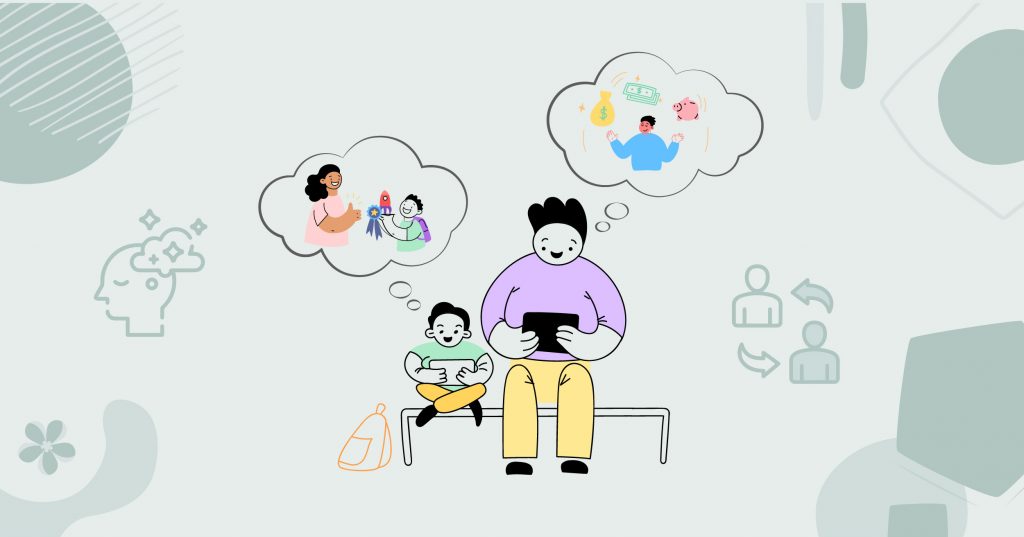What Does Being Materialistic Mean
Let’s dive a bit deeper into that moment at the checkout counter, shall we? Shopping has evolved into a highly personal activity that goes way beyond basic needs. Each time we reach for that sleek new smartphone or that designer jacket, it’s not just a transaction—it’s a transformation. We’re not merely spending money; we’re attempting to enhance our identity, broadcasting a version of ourselves we hope the world will admire.
But here’s what really happens in the aisles of our favorite stores or those endless online scrolls: with every item we consider, there’s a whisper of what we aspire to be. That cutting-edge gadget? It’s not just about staying connected; it’s about being seen at the cutting edge. That luxury jacket isn’t just about warmth; it’s about wearing confidence on our sleeves. Each purchase is a piece in the mosaic of our projected self-image, each tag snipped a badge of belonging or achievement.
Yet, beneath the crisp rustle of shopping bags, there’s an emotional undercurrent. Each swipe of the card is a narrative in itself—perhaps a chapter of striving for recognition, or a verse on battling insecurities. Why do we choose these symbols of status or success? Are we truly longing for the latest trends, or are we seeking validation from our peers? Is it a genuine desire or a defense against feeling inadequate?
As we navigate this complex marketplace of goods and self-worth, it’s crucial to pause and ponder the motives behind our purchases. Are we buying because we need, because we want, or because we’re trying to fill a void shaped like the latest fashion or tech fad? This introspection can reveal much about our emotional and psychological landscape, where the act of buying becomes a reflection of our internal dialogues about success, security, and self-esteem.
Characteristics of a Materialistic Person
Ever wonder why snagging a new gadget or splurging on a pair of shoes can feel so exhilarating? It’s not merely about acquiring something new—it’s about the chemistry in your brain. When you make a purchase, your brain lights up with dopamine, that feel-good chemical known for its role in the reward and pleasure systems. This isn’t a modern development; it’s a throwback to our survival days, where acquiring essential resources sparked a similar neurological celebration. Today, though, it’s less about survival and more about satisfaction.
But there’s more to it than just a burst of dopamine. The act of buying taps into our deep-seated desires for status and recognition. In a society where your worth can seem tangled up with what you own, each purchase can feel like a step up the social ladder. It’s as if with every new acquisition, we’re trying to craft an armor of sorts—shiny and new from the outside—to shield ourselves from feelings of inadequacy or to broadcast our success to the world.
Yet, this pursuit can turn into a double-edged sword. The initial thrill of the new purchase wears off all too quickly, leading to a cycle where the joy from buying fades, and the urge to fill that emotional gap leads to more purchases. It’s a cycle that feeds on itself, driven by our brain’s craving for another hit of dopamine, and reinforced by societal messages that equate success with possessions. As we chase these highs, we can end up in a relentless pursuit of more, often mistaking material wealth for personal growth or happiness.
Subscribe to newsletter
Get your Gut Health Starter Guide right now.
Elevate your Tuesdays with practical, science-backed wisdom propelling you forward on your gut health journey.

How to Stop Being Materialistic
How can we break free from the material treadmill and find genuine satisfaction in our consumption choices? It starts with mindful spending.
- Reflect Before You Buy: Take a moment to consider why you want to make a purchase. Is it out of need, desire for joy, or are you trying to fill an emotional gap? Being honest with yourself about your motives can help you make more conscious choices.
- Define Your Values: Understand what truly matters to you beyond the material. Aligning your spending with your core values—whether it’s sustainability, craftsmanship, or supporting local businesses—can make each purchase more meaningful and less impulsive.
- Cultivate Non-Material Sources of Joy: Invest in experiences and relationships that enrich your life. Whether it’s learning a new skill, enjoying nature, or spending time with loved ones, these experiences can provide deeper and longer-lasting satisfaction than material goods.
- Set Spending Goals: Create financial goals that are aligned with your long-term well-being, such as saving for a dream trip or investing in education. This shifts your focus from short-term gratification to long-term benefits, helping you prioritize spending that contributes to your personal growth.
A Snapshot of Change
Lucas, a tech enthusiast in his mid-thirties, found himself caught in a cycle of compulsive purchasing. Every new gadget release seemed like a ticket to happiness, but the thrill faded fast, leaving him financially and emotionally drained. “I was a gadget junkie,” Lucas admits, “always chasing the latest tech, thinking it would make me happy. But after every purchase, the excitement quickly wore off, and I was left feeling even emptier.”
The turning point came when he faced the tangible consequences of his spending habits—mounting bills and a profound sense of dissatisfaction. This realization forced Lucas to reevaluate his relationship with technology. “I had to ask myself what truly brought me joy about technology,” he says. It wasn’t the possession of gadgets but the possibilities they unlocked.
With this new perspective, Lucas redirected his focus from accumulating to creating. He invested in a quality camera and signed up for photography classes, replacing his shopping sprees with photo walks and engaging with a community of photography enthusiasts. “Swapping shopping for shooting photos was a game-changer. I discovered a passion for creating something tangible and connecting with people who shared that passion.”
This shift not only alleviated his financial strain but also enriched his social life and creative skills. “Joining the photography community introduced me to people who valued creativity over consumption. It was refreshing and deeply fulfilling,” Lucas reflects. “The satisfaction I now get from capturing a moment perfectly or receiving feedback at a gallery meet-up is infinitely more rewarding than any shopping high.”
Lucas’s story is a testament to the transformative power of aligning one’s passions with personal spending. “I’ve learned that true happiness comes from what you create and share, not from what you own. My urge to buy has been replaced by a desire to create and connect,” he shares. Today, Lucas not only enjoys a more financially stable and fulfilling life but also serves as an inspiration to others struggling with similar compulsive habits.


















